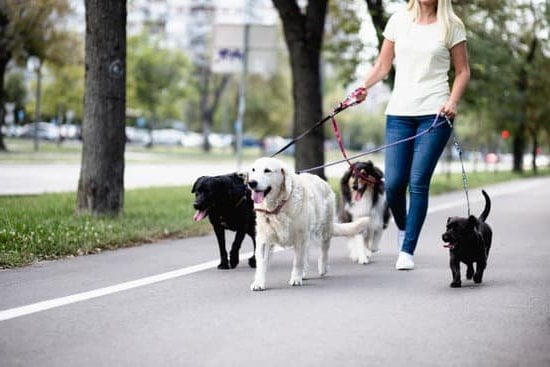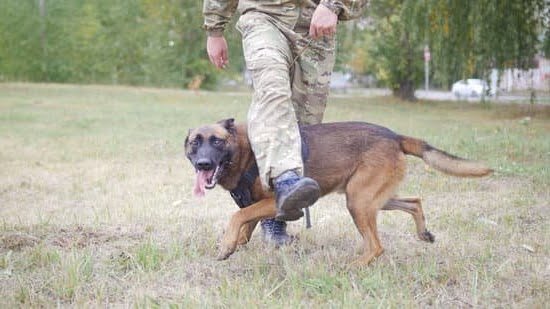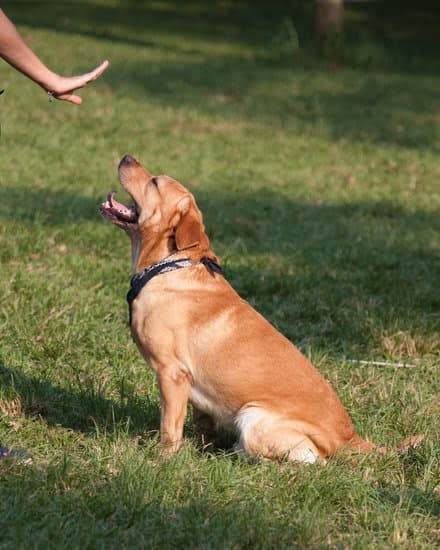Training a dog to become a military working dog is a complex and rigorous process that requires dedication, patience, and expertise. The role of military dogs in various armed forces has evolved significantly over the years, demonstrating their invaluable contribution to missions and operations. Understanding the history and importance of military dogs is essential for anyone interested in training their canine companion for this specialized role.
One of the crucial steps in preparing a dog for military service is selecting the right breed. Certain breeds are better suited for the demands of military training and deployment, possessing the necessary traits such as intelligence, loyalty, agility, and strong work ethic. Additionally, basic obedience training lays the foundation for a successful military working dog, with commands like sit, stay, heel, and come forming the core of their training.
Advanced training techniques are also vital in shaping a dog into an effective military asset. Specialized methods including scent detection and agility help develop the dog’s capabilities for various tasks and scenarios encountered during military operations. Moreover, building a strong bond between the handler and the dog is essential for fostering trust and cooperation, which are crucial elements in any successful working relationship.
Selecting the Right Breed
When it comes to training your dog as a military dog, one of the most crucial steps is selecting the right breed. Not all dogs are suitable for military training and deployment, so it’s important to choose a breed that possesses the necessary traits and characteristics for this type of work. Here are some of the best dog breeds for military training and deployment:
- German Shepherd: Known for their intelligence, loyalty, and versatility, German Shepherds are one of the most popular choices for military working dogs. They excel in various tasks such as scent detection, patrol work, and search and rescue operations.
- Belgian Malinois: Similar to German Shepherds, Belgian Malinois are highly intelligent, agile, and hardworking. They are often used in roles such as explosive detection and apprehension of suspects.
- Labrador Retriever: With their friendly demeanor and strong work ethic, Labradors make excellent detection dogs, particularly in sniffing out explosives or narcotics.
It’s important to consider the specific needs and requirements of the military branch when selecting a breed for training. Different branches may have varying preferences based on the nature of their missions and operations. Additionally, individual traits such as drive, focus, and adaptability should be carefully evaluated in potential candidates.
Ultimately, choosing the right breed is just the first step in preparing a dog for military work. Proper training, socialization, and conditioning are essential to mold these breeds into effective assets for military operations.
- https://www.akc.org/dog-breeds/belgian-malinois/
- https://www.akc.org/dog-breeds/labrador-retriever/
Basic Obedience Training
Training a dog for military service is a highly specialized and rigorous process that requires a strong foundation in basic obedience. Teaching essential commands such as sit, stay, heel, and come is crucial for the dog to understand and follow instructions in high-pressure situations. Military dogs must be able to respond promptly to their handler’s commands in various environments, making basic obedience training an essential first step in their preparation.
To train your dog as a military dog, start with the basics of obedience training. Use positive reinforcement techniques such as treats and praise to reward your dog for obeying commands. Be consistent and patient during training sessions, gradually increasing the level of difficulty as your dog becomes more proficient in following commands. It is important to establish clear communication and mutual trust between you and your dog during this foundational stage of training.
Additionally, incorporating obedience training into daily routines helps reinforce the dog’s responsiveness to commands. This consistency is key in preparing a military working dog to follow instructions even amidst distractions or stressful situations. By mastering basic obedience skills, the dog will be better equipped for more advanced training techniques required for military service.
In summary, basic obedience training is an essential component of preparing a dog for military service. Through positive reinforcement, consistency, and patience, handlers can effectively teach their dogs essential commands such as sit, stay, heel, and come. This foundational training sets the stage for more advanced skills necessary for a successful career as a military working dog in various armed forces around the world.
Advanced Training Techniques
Scent Detection Training
Scent detection is a crucial skill for military dogs, as they are often deployed to detect explosives, drugs, and other contraband. To train your dog in scent detection, start by introducing it to the target scent using positive reinforcement techniques. Pair the scent with a reward, such as treats or playtime, to create a positive association. As the dog becomes familiar with the scent, gradually increase the difficulty by hiding the target scent in various locations and challenging environments.
Agility Training
Agility training is essential for military dogs to navigate through different terrains and obstacles effectively. This specialized training involves teaching the dog to maneuver through tunnels, over ramps, and around hurdles with speed and precision. Use positive reinforcement methods such as treats and praise to encourage the dog to complete agility courses successfully. Gradually increase the complexity of the obstacles to improve the dog’s agility and problem-solving skills.
Distance Control Training
In military operations, it is crucial for handlers to have complete control over their dogs at all times, even at a distance. Distance control training teaches the dog to respond to commands from a distance, allowing handlers to maintain communication in challenging situations. Start by practicing basic commands such as sit and stay while gradually increasing the distance between you and your dog. Use verbal cues and hand signals to ensure clear communication during distance control exercises.
Training your dog as a military working dog requires dedication, patience, and expertise in specialized training methods. With proper instruction and consistent practice, your canine companion can develop into a valuable asset for military operations. By implementing advanced training techniques such as scent detection, agility training, and distance control, you can prepare your dog for the challenges of military service.
Bonding and Trust Building
Establishing a strong bond and trust between the handler and the dog is crucial for training a military dog. This bond forms the foundation for effective communication and teamwork in high-pressure situations. One of the most important aspects of bonding and trust building is spending quality time with the dog.
This can include regular grooming, playtime, and simply being present in each other’s company. By consistently engaging with the dog in various activities, the handler can develop a deep sense of understanding and connection with their canine partner.
In addition to spending time together, positive reinforcement techniques are essential for strengthening the bond between the handler and the dog. Maintaining a calm, patient, and authoritative demeanor during training sessions can help build mutual respect. Rewarding the dog with treats, praise, or play when they display desired behavior fosters a sense of trust and loyalty towards their handler.
Furthermore, clear communication is fundamental in developing trust between the handler and the dog. Consistency in commands, tone of voice, and body language helps establish a predictable environment for the dog. Through regular practice and repetition, the dog learns to interpret cues from their handler effectively. This level of understanding creates a strong bond based on clear communication and mutual trust.
| Aspect | Description |
|---|---|
| Spending Time Together | Regular grooming, playtime, quality time spent together |
| Positive Reinforcement | Rewarding desired behavior with treats, praise, or play |
| Clear Communication | Consistency in commands, tone of voice, body language for effective understanding |
Exposure to Loud Noises and Stimuli
Training a dog to become a military working dog requires thorough preparation for the challenging and unpredictable environments they will encounter. One crucial aspect of this preparation is exposing the dog to loud noises and various stimuli that mimic the chaotic nature of military operations. This exposure helps desensitize the dog, ensuring that it remains calm and focused in high-pressure situations.
To begin this training, it is important to start with gradual exposure to loud noises such as gunfire, explosions, and other loud sounds commonly heard in combat zones. This can be achieved by using recordings or specialized training tools designed to simulate these noises in a controlled environment. The goal is to accustom the dog to these stimuli while providing positive reinforcement through rewards and praise for remaining composed.
In addition to loud noises, military dogs must also be exposed to various stimuli including unfamiliar objects, environmental elements, and potentially disorienting scenarios. This could involve navigating through obstacle courses, encountering unfamiliar surfaces, and practicing agility exercises in different terrains.
By gradually introducing these stimuli during training sessions, handlers can effectively prepare their dogs for the unpredictability of real-world military operations. Overall, thorough exposure to loud noises and diverse stimuli is essential in ensuring that a military working dog remains focused, alert, and unphased during intense situations.
Physical Fitness and Endurance Training
One effective way to enhance a military dog’s physical fitness is through regular exercise routines that focus on cardiovascular endurance and muscular strength. This can include activities such as running, swimming, and agility drills. Additionally, incorporating obstacle courses into the training regimen can help improve the dog’s coordination and ability to navigate complex terrains.
In addition to exercise, maintaining a balanced diet is essential for building and sustaining a military dog’s physical fitness. Providing high-quality nutrition in the form of protein-rich meals not only supports muscle development but also aids in maintaining overall health and energy levels. Proper hydration is also a key factor in ensuring that the dog remains fit for deployment.
It is important to note that while physical fitness training is vital, it should be done gradually and with consideration for the dog’s individual capabilities. Pushing a dog too hard or too fast can result in injury or burnout. As such, any physical training program should be designed with the guidance of experienced trainers who understand how to train your dog as a military dog effectively without risking their well-being.
| Training Method | Description |
|---|---|
| Regular Exercise Routines | Focusing on cardiovascular endurance and muscular strength through activities like running, swimming, and agility drills. |
| Balanced Diet | Providing high-quality nutrition including protein-rich meals for muscle development and overall health. |
Behavioral Evaluation and Assessment
Understanding Temperament and Behavior
Before a dog can be considered for military training, it is essential to thoroughly evaluate its temperament and behavior. Military dogs must possess specific qualities such as courage, intelligence, loyalty, and the ability to remain calm under pressure. A thorough assessment will help determine if the dog has the right attributes for this line of work.
Testing for Suitability
During the evaluation process, trainers will expose the dog to various stimuli and situations to gauge its reactions. This may include testing the dog’s response to loud noises, unfamiliar objects, and interactions with strangers. Trainers will also assess how the dog handles stressful or challenging situations as an indicator of its suitability for military work.
Importance of Behavioral Evaluation
The behavioral evaluation serves as a crucial step in determining whether a dog is fit for military training. A thorough understanding of the dog’s temperament and behavior allows trainers to select candidates with the highest potential for success in demanding military operations. The evaluation process helps ensure that only dogs with the appropriate attributes are chosen for further training as military working dogs.
Military breeds must possess not only physical strength but also mental fortitude and a strong bond with their handlers in order to excel in their roles. Understanding a dog’s temperament and behavior is essential in selecting suitable candidates for this specialized training
Certification and Deployment
In conclusion, training your dog to become a military working dog requires dedication, patience, and commitment. By understanding the history of military dogs and the important role they play in various armed forces, you can appreciate the significance of this specialized training.
Selecting the right breed is essential for success, as certain breeds are better suited for the demands of military work. Basic obedience training is the foundation of a military dog’s education, followed by advanced techniques such as scent detection and agility training.
Building a strong bond and trust between handler and dog is crucial for effective teamwork in high-pressure situations. Exposure to loud noises and stimuli helps prepare the dog for the chaotic environment of military operations. Physical fitness and endurance training are also vital, ensuring that the dog has the strength and stamina necessary for demanding missions. Additionally, understanding the temperament and behavior of your dog will help determine its suitability for military work.
Once your dog has completed official training programs and obtained certification, it may be deployed as a fully trained military working dog. This rewarding journey requires hard work, determination, and a deep understanding of how to train your dog as a military dog. The sense of pride in knowing that your canine companion is contributing to national security makes this endeavor truly worthwhile.
Frequently Asked Questions
How Do Dogs Become Military Dogs?
Dogs become military dogs through a rigorous selection process. They are usually chosen based on their breed, temperament, and physical abilities. Once selected, they undergo specialized training to prepare them for the unique demands of military service.
How Long Does It Take to Fully Train a Military Dog?
It typically takes around 18-24 months to fully train a military dog. This includes basic obedience training, specialized tasks such as detection work or patrol duties, and rigorous physical conditioning. After this initial training period, ongoing reinforcement and skill maintenance is required throughout the dog’s career.
What Commands Do Military Dogs Learn?
Military dogs learn a wide range of commands to assist their handlers in various tasks. These commands can include basic obedience commands such as sit, stay, and heel, as well as more advanced commands like detecting explosives or narcotics, tracking individuals or objects, apprehending suspects, and providing protection to their handlers in combat situations.
The dogs undergo intensive training to ensure they respond reliably to these commands in high-pressure environments.

Welcome to the blog! I am a professional dog trainer and have been working with dogs for many years. In this blog, I will be discussing various topics related to dog training, including tips, tricks, and advice. I hope you find this information helpful and informative. Thanks for reading!





